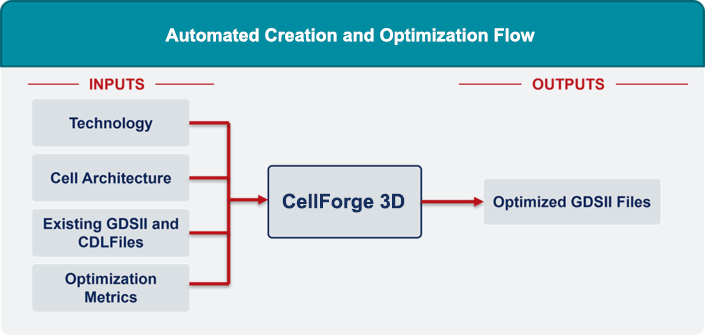
CellForge 3D Flow
Key Features
- Sub-10nm FinFET support
- Integrated place and route engine creates correct by construction layout
- Compatible with multi-patterning rules, cut rules, or any other complex FinFET processes rules
- Advanced process technology, including context sensitive spacing and enclosure rules, preferred shape patterns, self-aligned double patterning (SADP) and support of local interconnect
- Scalable parallel processing to improve throughput
- Multiple layout options are created simultaneously
- Integration with leading third-party DRC, LVS and LPE tools to ensure high-quality sign-off layouts and minimal disruption to existing flows
- Flexible setup of process technologies and foundry design rules, enabling ultra-fast, DRC clean layout generation
Key Benefits
- Significantly improves productivity
- Eliminates or greatly reduces manual layout effort
- Fast turnaround time, complete library in one day
- Enables exploration of different dimensions (cell architecture, design rules, sizing strategy, different track heights, DFM rules)
- Consistent layout
- Reuse of schematics reduces design time
- Automates PDK updates

